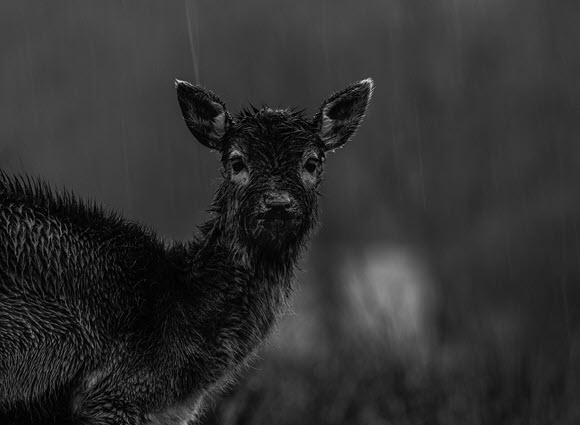A Glimpse into Winter Transitions
Share article:
Article by:
Laura McMahon, Marketing Manager, British Deer Society
Observing UK Deer in February and March: A Glimpse into Winter Transitions
As winter loosens its grip and nature begins to stir, the woodlands and fields of the UK offer a captivating tableau for those keen on observing wildlife. In particular deer, arguably the most elegant inhabitants of our countryside, undergo intriguing transitions during the months of February and March. Let’s consider some of the changes that mark this transitional period between winter and spring.
Antler Casting
A remarkable spectacle during late winter is the shedding of antlers by some male deer. Red and sika start to cast them from early March, with fallow a few weeks later. Keep a lookout for stags sporting a single antler or none at all. If you are lucky you might even find a cast antler, often lying in a place where a sudden jar has caused the weakened join between skill and antler to part.
Foraging for Winter Reserves
As winter lingers and resources remain scarce, deer actively forage as their remaining fat reserves diminish. Feeding on shrubs, woody vegetation, and grasses is essential for maintaining strength as they await the vibrant growth of spring.
Early Coat Colour Transition and Signs
As we reach the end of the winter you may start to witness subtle changes in coat colour as the weather improves. Keep an eye out for signs of early shedding or a shift to a lighter hue. While deer tend to retail their winter coats well into April and beyond, nature can sometimes respond earlier to conditions rather than wait for calendar dates.

Weather-Driven Movements and Wary Behaviour
Sensitive to weather conditions, deer may adjust their movements based on temperature, precipitation, and daylight hours. Warmer days encourage more activity, while colder ones encourage conserving energy. Late winter also sees deer at heightened states of vigilance, reflecting their cautious approach to essential foraging in resource-scarce environments.
Roe Deer Observations and Preparation for Spring
For observers of roe deer, the smaller and more solitary members of the deer family, February, and March offer opportunities to witness foraging in fields and woodlands. Impromptu winter groups, often formed in places offering better feeding, will soon be breaking up. Females may be starting to show signs of impending young and males will be regrowing the antlers which they cast at the end of last year.
As we navigate the nuanced landscape of deer behaviour in February and March, the anticipation of spring is palpable. Each hoof print and subtle behaviour tells a story of adaptation, survival, and the ever-turning wheel of nature. Venture into the outdoors, respect their space, and witness the fascinating spectacle of UK deer in this transitional season.
FIND OUT MORE
The British Deer Society is a charity working to improve awareness and understanding about deer, deer welfare and deer management. You can add your voice today by:











